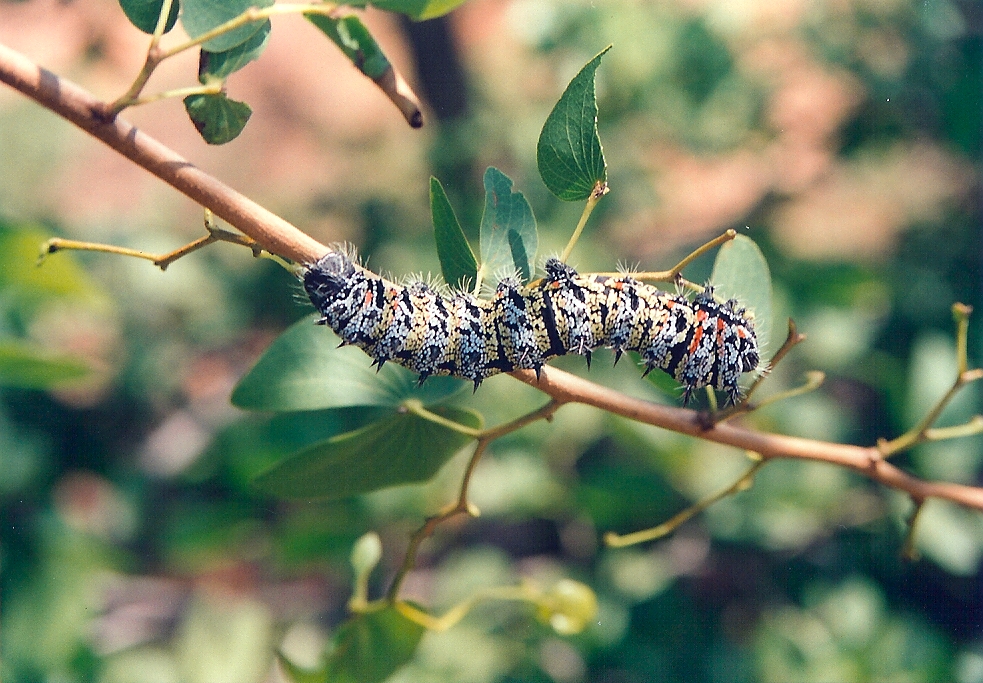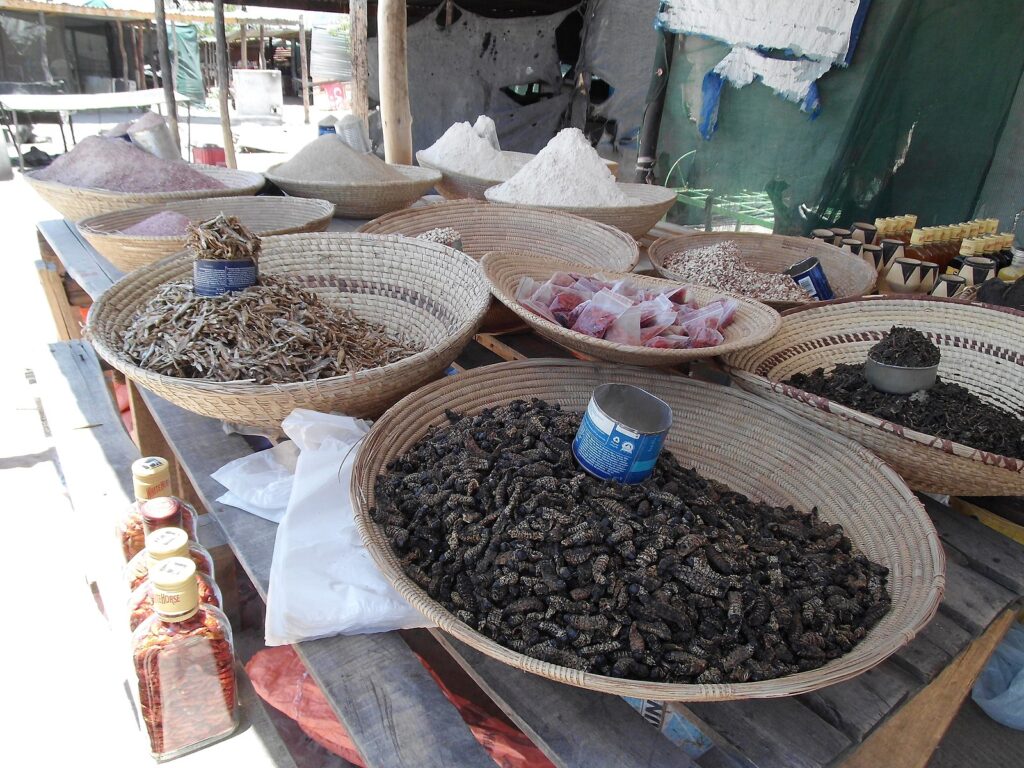To the western ear, a dish of mopane worms may not sound a very appetising prospect. But this simple, traditional food – harvested directly from the bush – is a vital source of protein for many rural communities across the KZAZ region. What’s more, it’s delicious!
First up, the animals in question are not ‘worms’ at all. They are, in fact, the fat, juicy caterpillars of a large species of emperor moth, known to entomologists as Gonimbrasia belina. This handsome insect is native to the warmer parts of southern Africa. It is especially abundant in areas where the mopane tree (pronounced mo-par-nee) grows – which is convenient, as swathes of the KAZA region are carpeted with mopane woodland, also a great habitat for elephant, kudu and many other browsing animals.

Harvesting the caterpillars depends upon understanding the moth’s lifecycle. Over winter, its pupae remain underground at the foot of the mopane trees. With the summer rains, the adults emerge to lay their eggs on the trees’ butterfly-shaped leaves. When the eggs hatch, the caterpillars proceed to munch through the foliage, moulting five times as they grow larger. After the fourth moult, they are ready for harvesting. Pickers – usually women and children – pluck the caterpillars from the tree. They are then pinched at the tail end to rupture the innards and squeezed like a tube of toothpaste to expel the slimy, green gut contents.
After harvesting, the caterpillars are washed, boiled, preserved with salt and then either left to dry in the sun or smoked for extra flavour. Dried mopane worms can be eaten as a crispy snack, but generally they are used to make a variety of dishes. This involves first soaking them for at least an hour, before boiling them, frying them with garlic, onions and whatever other flavouring comes to hand, before adding tomatoes to create a stew or ‘relish’. This is traditionally served hot with mielie pap – known as sadza in Zimbabwe, and by various other names across the region.
Traditionally, mopane worms were harvested as a seasonal subsistence food. The caterpillars are not considered to belong to the landowner (if any), but when harvesting around a dwelling house, permission should be sought from its resident. Some harvesters may tie a piece of bark to particular trees to establish ownership. In recent times, however, mopane worm harvesting has taken on a more commercial dimension – particularly in South Africa, where the sale of mopane worms has become a multi-million rand industry. Mass produced mopane worms are typically canned in tomato sauce, chili sauce or brine, and can be found in rural supermarkets and markets around southern Africa. Unfortunately, in some regions, commercial-scale harvesting can be detrimental to both the local community, for whom the caterpillars may previously have been an important food source, and to the local environment, which may become seriously depleted.
The mopane worm is known by a variety of names across the KAZA region. These include phane (Botswana), muyaya (Zambia), amacimbi (Zimbabwe) and omagungu (Namibia).








